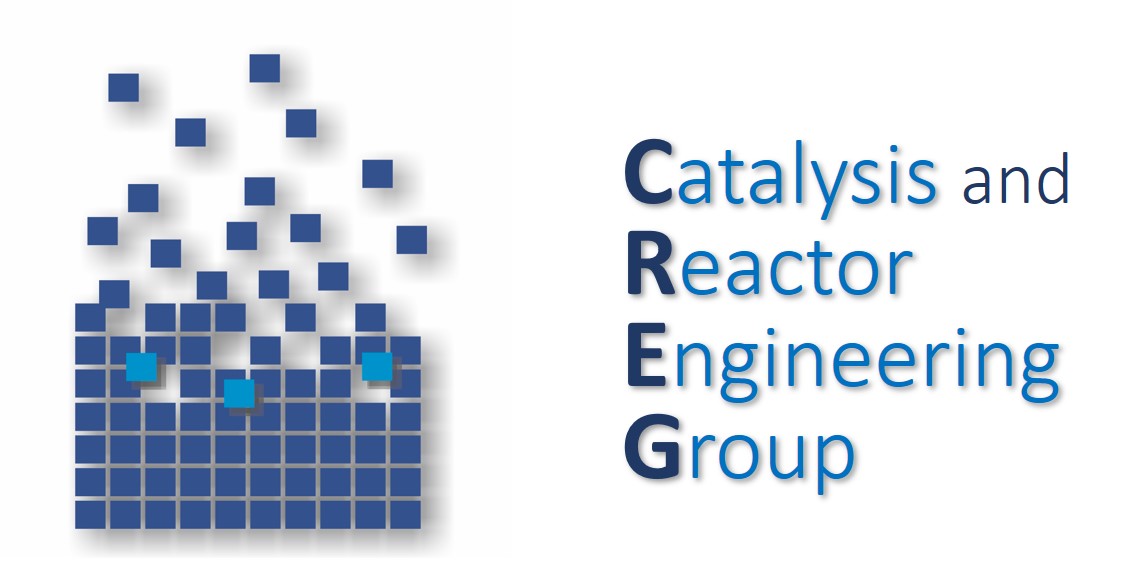
Call: +34 976 762 393
Email: jhergui@unizar.es
Address: Office 4.2.9 c/Mariano Esquillor SN Edificio I+D+i, I3A, 50018, Zaragoza (Spain)
Sideral: See the profile (CV)
ABOUT ME
Javier Herguido is Professor of Chemical Engineering (Catedrático de Universidad) at the School of Engineering and Architecture (EINA) of the University of Zaragoza (Unizar), since 2007. He holds a B.Sc. and M.Sc. in industrial chemistry (1987) and a PhD in Science – Chemical Engineering program (1991). In 1993 holder of the chair ‘Chaire Hélioparc’ at the Technology Center ‘Hélioparc Pau-Pyrénées’ (France). Guest professor at several research centers and universities: ‘Laboratoire de Physico-Chimie Moléculaire’ CNRS-France, PUCP University-Peru, National University of Cuenca-Ecuador.
Currently, he is the Head (Director) of the Department of Chemical Engineering and Environmental Technologies – Unizar, and the Secretary of the Spanish Catalysis Society (SECAT).
In his research activity, he is a member of the Catalysis and Reactor Engineering Group (CREG) and the Aragon Institute of Engineering Research (I3A). His current research activity is focused in the area of Chemical Reactor Engineering including:
a) Fluidized bed reactors with oxidizing and reducing zones for selective oxidation processes and for catalytic dehydrogenations.
b) Hydrogen technologies: his current research efforts are devoted to fields related with hydrogen production and/or purification from several sources, hydrogen utilization in Power to Gas processes such as CO2 methanation, and Power to Liquid processes such as methanol production.
c) Processes intensification, including the use of membrane reactors.
He has participated in 43 research projects, largely as main researcher. His scientific production includes: 120 papers (counting 2 reviews per invitation) in JCR-indexed journals such as AIChEJ, Appl. Catal., Cat. Today, CEJ., CES, IECR, Int. J. Hydrogen Energy, J. Catal., J. Power Sources, Powder Tech., Studies Surf. Sci. Catal., among others; over 370 presentations at scientific meetings; 2 patents; and the book “Chemical Reaction Engineering” (1999, Ed. Síntesis, Madrid). He has supervised 14 PhD thesis. H Index: 35 (G-Scholar, 3762 citations), 30 (Scopus, 2760 citations) -October 2023-
Orcid: https://orcid.org/0000-0003-1940-9597
Scopus: https://www.scopus.com/authid/detail.uri?authorId=57195414034
PUBLICATIONS
2026
Mercader, V. D.; Sanz-Monreal, P.; Durán, P.; Aragüés-Aldea, P.; Francés, E.; Herguido, J.; Peña, J. A.
Intensifying synthetic natural gas production by functionalization of a NiFe/γ-Al2O3 catalyst with alkaline and alkaline-earth materials Journal Article
En: Fuel, vol. 406, pp. 136698, 2026, ISSN: 0016-2361.
@article{MERCADER2026136698,
title = {Intensifying synthetic natural gas production by functionalization of a NiFe/γ-Al2O3 catalyst with alkaline and alkaline-earth materials},
author = {V. D. Mercader and P. Sanz-Monreal and P. Durán and P. Aragüés-Aldea and E. Francés and J. Herguido and J. A. Peña},
url = {https://www.sciencedirect.com/science/article/pii/S0016236125024238},
doi = {https://doi.org/10.1016/j.fuel.2025.136698},
issn = {0016-2361},
year = {2026},
date = {2026-01-01},
journal = {Fuel},
volume = {406},
pages = {136698},
abstract = {This study demonstrates the influence of the functionalization method (Mechanical Mixture -MM- and Dual Function Materials -DFM-) of two CO2 adsorbent species (Na and Ca) in a catalytic fixed-bed reactor for CO2 methanation. The experiments consisted of cycles beginning with a CO2 adsorption stage followed by a methanation stage (with H2), interspersed with or without inert purge periods. The greatest enhancement in methane generation was observed in experiments with a mechanical mixture (MM) of NiFe/γ-Al2O3 catalyst and Na2O/γ-Al2O3. The methane production capacity was tested over a temperature range comprised between 200 and 400 °C, with values over 380 μmol/g obtained under moderate conditions (350 °C and pCO2 = 0.12 bar) and selectivity to methane close to 100 %. Since the ultimate goal is the methanation of the CO2 present in a biogas (without removing CH4), the potential effect of the presence of methane during the CO2 adsorption stages was also investigated. To achieve this task, a feed stream representative of a sweetened biogas coming from the anaerobic decomposition of municipal solid waste (MSW) (70 %v CH4 and 30 %v CO2) was used. The results showed no adverse effects along the successive cycles, paving the way to the use of these solids for biogas upgrading. On the other hand, the catalyst did not show a significant loss of activity after several hours of repetitive adsorption-methanation cycles.},
keywords = {},
pubstate = {published},
tppubtype = {article}
}
González-Pizarro, R.; Calero-Berrocal, R.; Lasobras, J.; Renda, S.; Rodríguez-Pardo, M. R.; Soler, J.; Menéndez, M.; Herguido, J.
Tuning e-fuel selectivity in sorption-enhanced CO2 hydrogenation over In2O3/ZrO2: The effect of LTA and FAU zeolites Journal Article
En: Fuel, vol. 406, pp. 136974, 2026, ISSN: 0016-2361.
@article{GONZALEZPIZARRO2026136974,
title = {Tuning e-fuel selectivity in sorption-enhanced CO2 hydrogenation over In2O3/ZrO2: The effect of LTA and FAU zeolites},
author = {R. González-Pizarro and R. Calero-Berrocal and J. Lasobras and S. Renda and M. R. Rodríguez-Pardo and J. Soler and M. Menéndez and J. Herguido},
url = {https://www.sciencedirect.com/science/article/pii/S0016236125026997},
doi = {https://doi.org/10.1016/j.fuel.2025.136974},
issn = {0016-2361},
year = {2026},
date = {2026-01-01},
journal = {Fuel},
volume = {406},
pages = {136974},
abstract = {The e-fuels synthesis via CO2 hydrogenation and the Sorption Enhanced Reaction technology are captivating strategies for CO2 utilization and the integration of renewable energy sources. This study focuses on enhancing the conversion of CO2 over an In2O3/ZrO2 catalyst by incorporating LTA zeolites (3A and 4A) and a FAU zeolite (13X). Key operational parameters, such as temperature (T), Gas Hour Space Velocity (GHSV), type of zeolite, and Zeolite: Catalyst mass ratio (Z/C), were systematically varied. LTA zeolites (3A and 4A) provided the highest CO2 conversions. The introduction of a water-adsorbing solid into the reactor significantly altered the products yield and selectivity. While the selectivity towards CH4, CH3OH, and C2H6O appeared to lay on the type of zeolite, the selectivity towards CO remained unaffected. Zeolite 3A demonstrated the greatest enhancement in selectivity towards CH4 and CH3OH, whereas the synthesis of C2H6O was favored by zeolites 4A and 13X. The Zeolite:Catalyst mass ratio also played a crucial role in process performance, influencing both CO2 conversion and product selectivity. Increasing this ratio improved CO2 conversion and reduced CO selectivity under all operating conditions, while CH4 selectivity increased. However, the selectivity toward CH3OH and C2H6O exhibited an anomalous and complementary behavior. While a maximum was observed for DME, a minimum was registered in methanol production, suggesting a dependency of the dehydration reaction kinetics on the amount of water produced during the reaction.},
keywords = {},
pubstate = {published},
tppubtype = {article}
}
González-Pizarro, R.; Renda, S.; Lasobras, J.; Soler, J.; Menéndez, M.; Herguido, J.
Low loading copper-based catalysts for effective CO2 hydrogenation to methanol Journal Article
En: Fuel, vol. 408, pp. 137642, 2026, ISSN: 0016-2361.
@article{GONZALEZPIZARRO2026137642,
title = {Low loading copper-based catalysts for effective CO2 hydrogenation to methanol},
author = {R. González-Pizarro and S. Renda and J. Lasobras and J. Soler and M. Menéndez and J. Herguido},
url = {https://www.sciencedirect.com/science/article/pii/S001623612503368X},
doi = {https://doi.org/10.1016/j.fuel.2025.137642},
issn = {0016-2361},
year = {2026},
date = {2026-01-01},
journal = {Fuel},
volume = {408},
pages = {137642},
abstract = {Methanol synthesis via CO2 hydrogenation is an emerging Power-to-Liquid (PtL) technology aimed to accelerate the energy transition and the defossilization of key sectors, particularly maritime transport. This study focuses on the study of low loading formulations, to minimize the catalyst cost. Key operational variables including temperature (T), Weight Hourly Space Velocity (WHSV), copper and zinc loadings, and aging state were systematically varied. An overall active phase loading of 10 %wt emerged as optimal. Within this total loading, a 5 %wtCu-5 %wtZn/ZrO2 catalysts delivered higher methanol productivity than 10 %wtCu/ZrO2; however, the bimetallic catalysts showed pronounced deactivation under water-rich atmospheres, establishing 10 %wtCu/ZrO2 as the most promising catalysts. Operating temperature and WHSV exerted a strong, synergistic influence on CH3OH formation; in particular, increasing WHSV shifted the reaction away from thermodynamic control and boosted methanol synthesis. Finally, the catalytic performance of these low-loading catalysts was benchmarked against high-copper-loading methanol catalysts reported in the literature by critically compare their activities as a function of the residence time (τ) calculated at reaction conditions. This assessment revealed that the proposed formulation is highly competitive when compared to most conventional formulation, with a maximum methanol space time yield (STYCH3OH) of 3.9 gCH3OH gCu-1 h-1. This comparison confirms that the catalysts proposed in this study could offer a remarkably more efficient use of the active phase than the conventional high-copper-loading catalysts.},
keywords = {},
pubstate = {published},
tppubtype = {article}
}
Renda, Simona; Soler, Jaime; Menéndez, Miguel; Herguido, Javier
Doped In2O3/ZrO2 catalysts to drive selectivity toward DME in one-pot CO2 hydrogenation Journal Article
En: Applied Catalysis A: General, vol. 710, pp. 120682, 2026, ISSN: 0926-860X.
@article{RENDA2026120682,
title = {Doped In2O3/ZrO2 catalysts to drive selectivity toward DME in one-pot CO2 hydrogenation},
author = {Simona Renda and Jaime Soler and Miguel Menéndez and Javier Herguido},
url = {https://www.sciencedirect.com/science/article/pii/S0926860X25005848},
doi = {https://doi.org/10.1016/j.apcata.2025.120682},
issn = {0926-860X},
year = {2026},
date = {2026-01-01},
journal = {Applied Catalysis A: General},
volume = {710},
pages = {120682},
abstract = {This study investigates single-pass dimethyl ether synthesis at mild pressure conditions using novel bifunctional catalysts based on indium-modified formulations and incorporating Ni, Cu, Pt, and Pd as active metals. Additionally, the substitution of the conventional HZSM-5 zeolite with 4A zeolite as the dehydration component was evaluated. Although 4A zeolite exhibited lower dehydration activity, it contributed to an overall improvement in DME selectivity. The incorporation of secondary metals into the In2O3-ZrO2 formulation reduced catalytic activity but enhanced selectivity, ultimately increasing DME yield. The formation of by-products such as light olefins and methane was significantly dependent on the metal used: Ni, Pt, and Pd reduced olefin production, though Ni promoted excessive methane formation across the whole temperature range. Notably, the Pt-based catalyst completely suppressed by-product formation across the temperature range studied. While the In2O3-ZrO2-based catalysts generally displayed lower space–time yields than the commercial reference, they achieved comparable performance at 280 °C. Due to their superior selectivity, these formulations are promising for developing even better performing catalysts, to be excellent candidates in industrial processes, where the operation with recycle loops requires a high product purity.},
keywords = {},
pubstate = {published},
tppubtype = {article}
}
2025
Ruiz-Alejos Rodríguez, David; Mercader Plou, Víctor; Peña LLorente, José Angel; Herguido Huerta, Javier
Modelado de Adsorción de CO₂ con Múltiples Métodos para Simulaciones de Power-to-Methane Proceedings
vol. 13, 2025.
@proceedings{Ruiz-AlejosRodríguez_MercaderPlou_PeñaLLorente_HerguidoHuerta_2025,
title = {Modelado de Adsorción de CO₂ con Múltiples Métodos para Simulaciones de Power-to-Methane},
author = {Ruiz-Alejos Rodríguez, David and Mercader Plou, Víctor and Peña LLorente, José Angel and Herguido Huerta, Javier},
url = {https://papiro.unizar.es/ojs/index.php/jji3a/article/view/11998},
doi = {10.26754/jji-i3a.202511998},
year = {2025},
date = {2025-07-01},
urldate = {2025-07-01},
journal = {Jornada de Jóvenes Investigadores del I3A},
volume = {13},
keywords = {},
pubstate = {published},
tppubtype = {proceedings}
}

